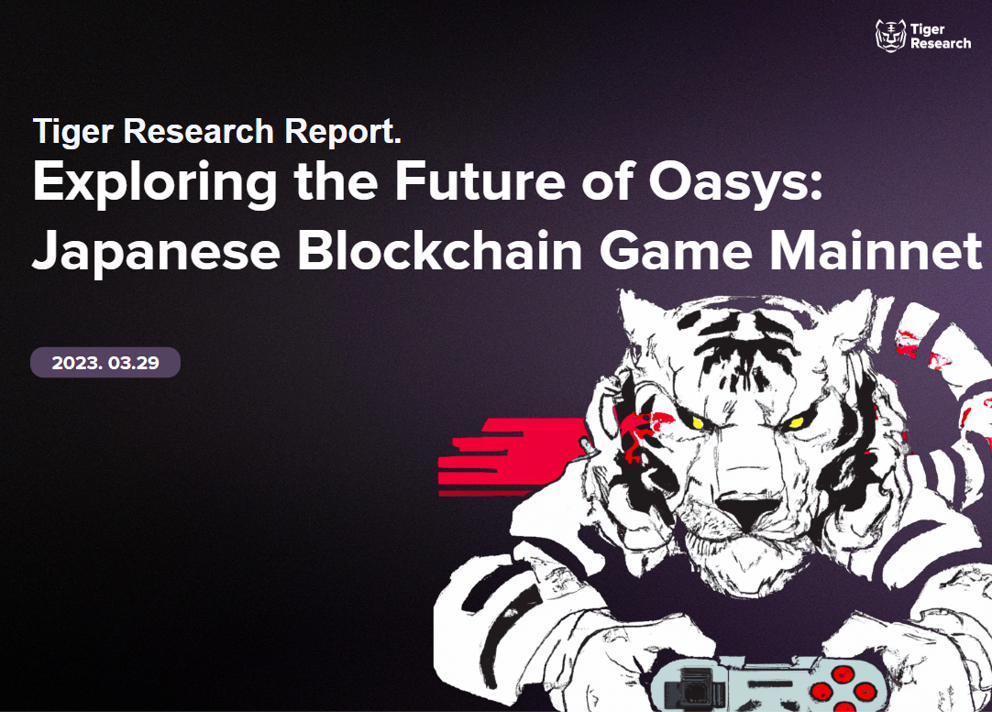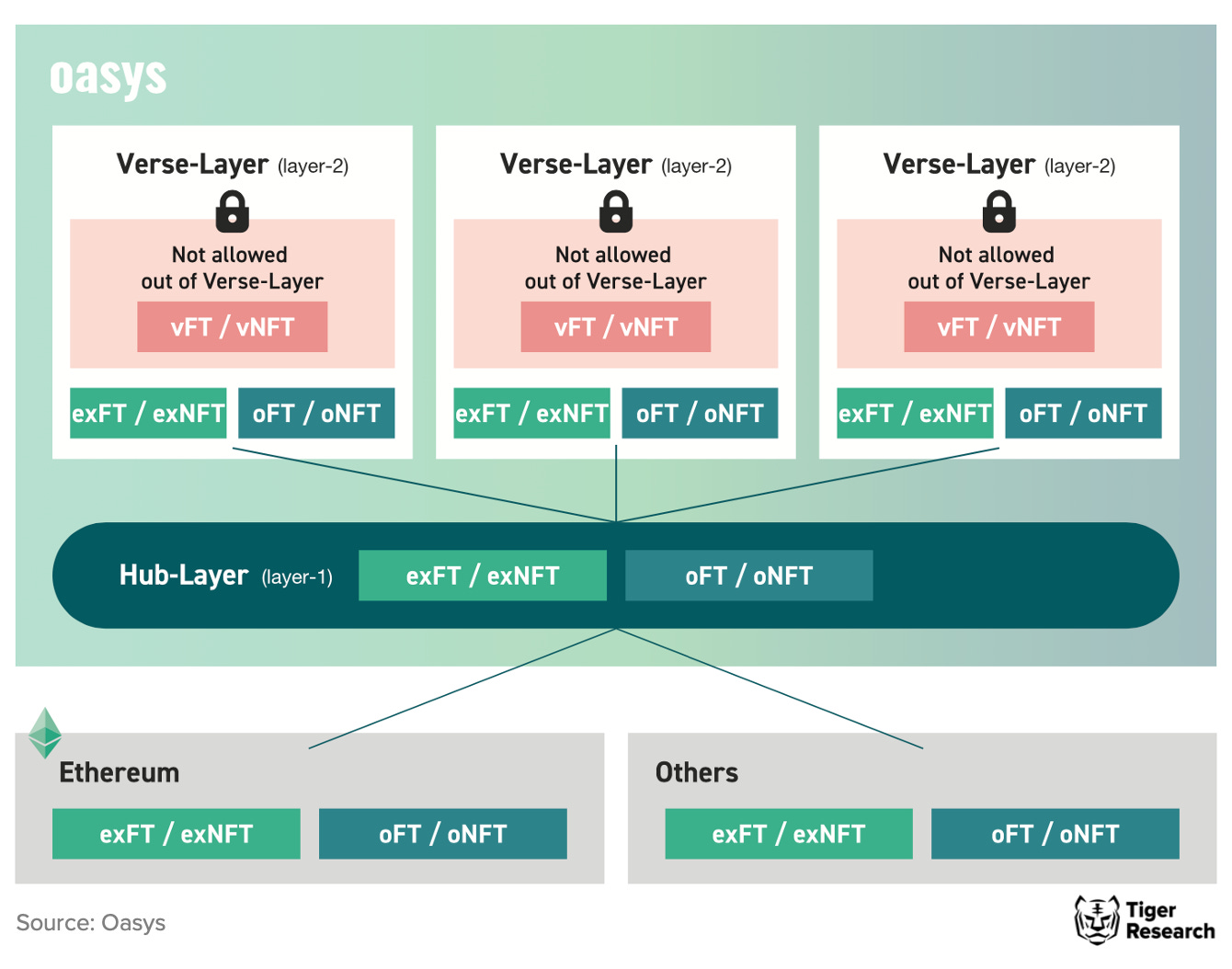Exploring the Future of Oasys : A Japanese Blockchain Game Mainnet
#3 Analyzing the Four Success Elements of Japanese Blockchain Games
TL;DR
The analysis of Oasys on-chain data has yet shown inconclusive data-points regarding meaningful user activity, despite the company's significant business development achievements.
This is likely due to external factors such as the continued crypto winter & conservative regulations, rather than internal factors within the Oasys Chain ecosystem.
Oasys must focus on qualitative improvements to enhance the 1) fun factor of games, 2) ownership of digital assets, 3) profitability for developers and players, and 4) convenience by removing UI/UX obstacles."
Introduction
Analyzing Oasys, the most anticipated Web3 game blockchain in Japan, the project has achieved promising business results, including partnering with renowned companies and a successful fundraising round of $20M. However, on-chain data regarding user activity such as transactions, active wallets, and dApps, is hard to observe.
Considering that the Oasys mainnet launched only five months ago in the middle of crypto winter, it may be too early to make definitive judgments. In addition, it is still noteworthy to emphasize the progressive success that Oasys is making in the early stages of the Japanese blockchain market.
The fundamental reason for such anticipation is the fact that Oasys is one of the very few "Made-in-Japan" blockchain projects. It is expected to gain momentum, aligned with the Japanese government's policy to activate the Web3 industry and lead to close collaborations with major IPs and AAA game companies as a blockchain entry point.
Additionally, research by Chain Analysis reveals that Japan's global crypto adoption rank increased by 56 places (82nd → 26th) compared to last year, indicating the potential for future growth. However, to translate such anticipation into tangible results, Oasys must focus on internal improvements and development rather than relying on external factors.
Four elements of successful Japanese Web3 games
To analyze the Oasys chain, we will focus on the four key elements of Japanese Web3 games. First, (1) Building Fun games is the priority ZERO. This was also reiterated in the GDC (Game Developers Conference) 2023, where the focus was on building fun games first. Secondly, Web3 games must be adequately decentralized and allow users to (2) truly own digital properties. Thirdly, a sustainable token economy should be established to create an environment where users and game developers can generate (3) economic benefits. Finally, it is essential to provide (4) ease of use for ordinary gamers to overcome the hurdles of Web3, as it is a crucial factor in the popularization of Web3 games.
(1) Building Fun Games
It is possible that Japanese gamers may have low interest or preference for games onboarded on the Oasys chain. This could be due to the limitations of blockchain-based games today, which may not accurately reflect Japanese gaming trends and preferences, or due to the fact that the quality of Web3 games is still relatively low.
However, upon examining the genre distribution of games onboarded on the Oasys chain, it is unlikely to have a significant impact on Japanese gamers' preferences, as it is similar to their existing preferences for Web 2 games. Japanese Web2 gamers show a preference for (1) RPG, (2) action, and (3) simulation games, while Oasys distributes its genres in the following order: (1) simulation, (2) RPG, and (3) puzzle games. However, it is regrettable that Oasys has not secured a more diverse range of genres, despite having similar top preferences.
It is also believed that the quality level of Web3 games onboarded within Oasys may have some influence. Currently, most Web3 games within Oasys have a casual style. However, considering that it takes around five years to develop a single AAA game, it may be premature to make hasty judgments. This issue is likely to be resolved gradually through the participation of various IPs and game companies.
(2) True Ownership of Digital Properties
When considering the decentralized value of Web3 games, owning digital assets within the game is considered a crucial element. However, when looking at the Oasys architecture, it appears to be more of a "conditional ownership" rather than complete ownership. For example, tokens (vFT/vNFT) minted in the Verse layer (Oasys L2) can only be used within the specific Verse layer where they were issued and cannot be moved to external layers (hub layer, other Verse layers, etc.).
Adding to the previous point, it's worth noting that Japanese game developers are extremely cautious about protecting their intellectual property (IP) rights. Therefore, the design of conditional ownership of digital assets in the Verse layer can be seen as a protective measure to prevent the uncontrolled use of their IP and potential damage to it. While the structure is understandable, it may be challenging for users to comprehend that they do not have complete ownership. There is also a concern that conflicts may arise in the future.
(3) Economic Benefits
In Web3 games, "profitability" is often mentioned as the most significant means of continuous motivation for gamers. In many cases, tokenomics is at the center of the success of Web3 games. Therefore, a structure that can generate economic profits is a critical element for Web3 games.
Looking at Oasys from the perspective of "economic upsides," it cannot be confidently said that it will bring sustainable profits. There is not a significant number of gamers, and there are no distinct characteristics compared to other P2E games.
It may be worth expecting an improved P2E structure in the future, considering the fact that one of the co-founders of YGG participated in the development of Oasys and that Oasys has formed a partnership with YGG Japan. Additionally, unlike in Korea, there are various GameFi guilds in Japan, which is quite supportive. In the future, with YGG at the center, various GameFi guilds in Japan could be fostered, leading to a more prosperous economic structure within the Oasys ecosystem.
(4) Easy to Play
In order to play Web3 games, players need tokens, which are the in-game currency. Therefore, it is also important to establish an environment where players can conveniently purchase tokens.
In Japan, in order to be tradable on virtual currency exchanges, a token must be listed on the "Japan Virtual Currency Exchange Association (JVCEA)." However, Oasys is not currently listed on JVCEA, making it impossible to purchase tokens on Japanese exchanges. Currently, token purchases can only be made through overseas exchanges using cryptocurrencies such as USDT and BTC. This is in contrast to other chains like Astar and Polygon, which allow purchases using Japanese yen, and it can be seen as somewhat inconvenient in terms of user experience.
It is believed that Oasys' token purchase process may be insufficient to attract ordinary gamers. Therefore, for the future mass adoption of Web3 games, it will be essential for Oasys to register its token (OAS) with JVCEA and list it on the Japanese yen markets.
Conclusion
We looked at the four key elements of Web3 games to see if the Oasys ecosystem can deliver results. While the Japanese Web3 market is still new, there are some challenges that need to be addressed for wider adoption. Once these challenges are overcome, we believe that Oasys can potentially become a major player in the Japanese gaming industry, competing with other global magnets.




